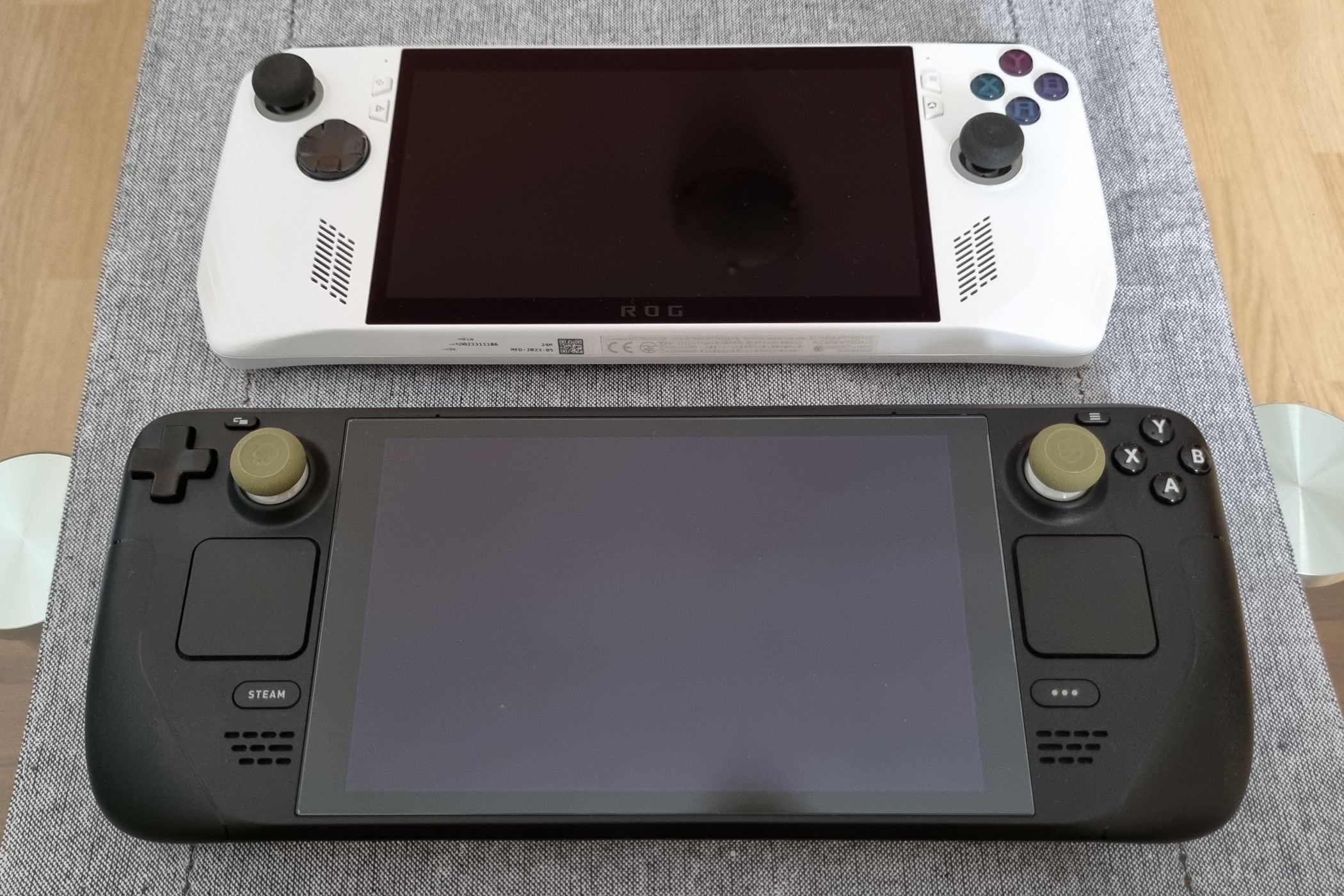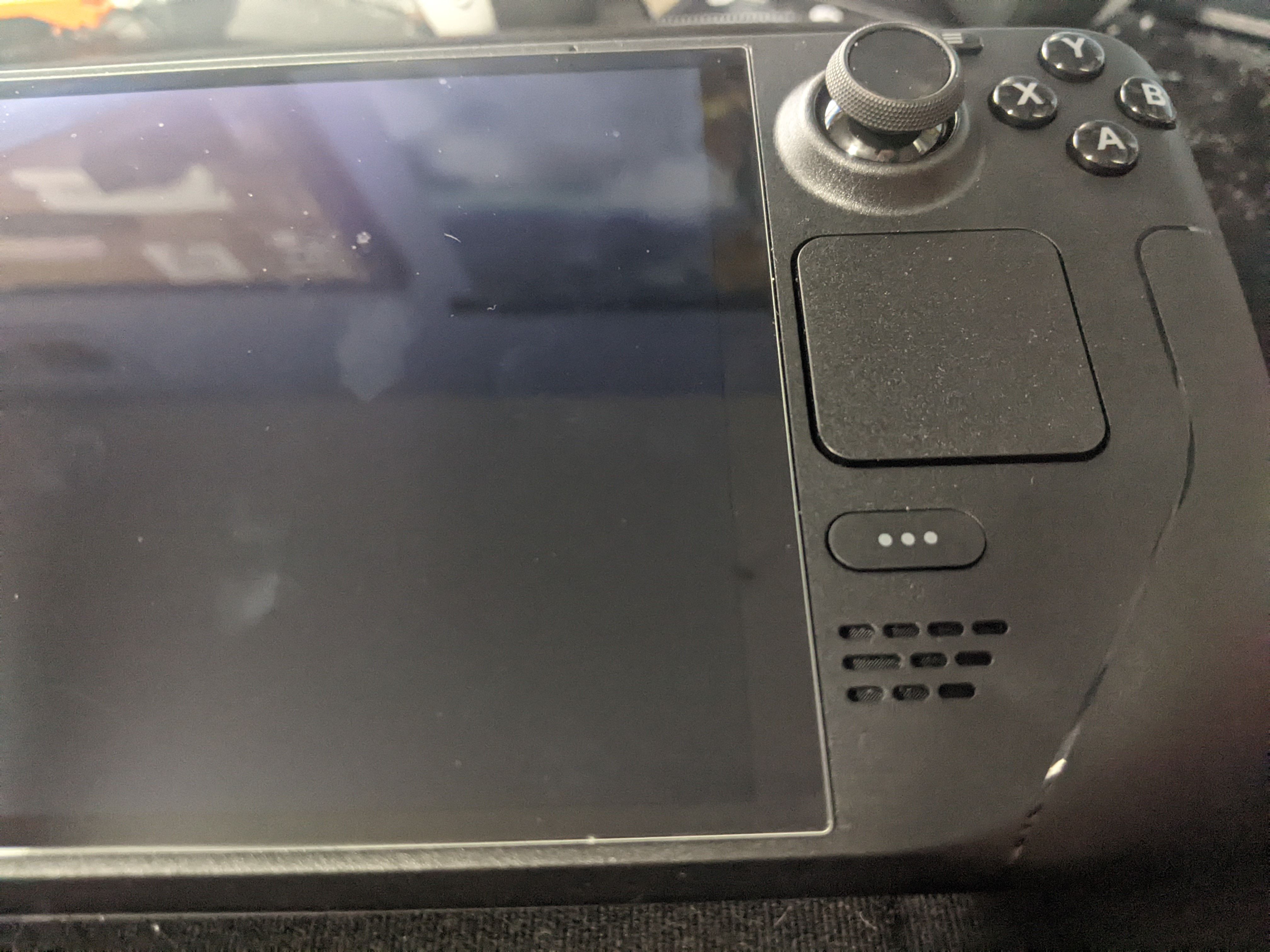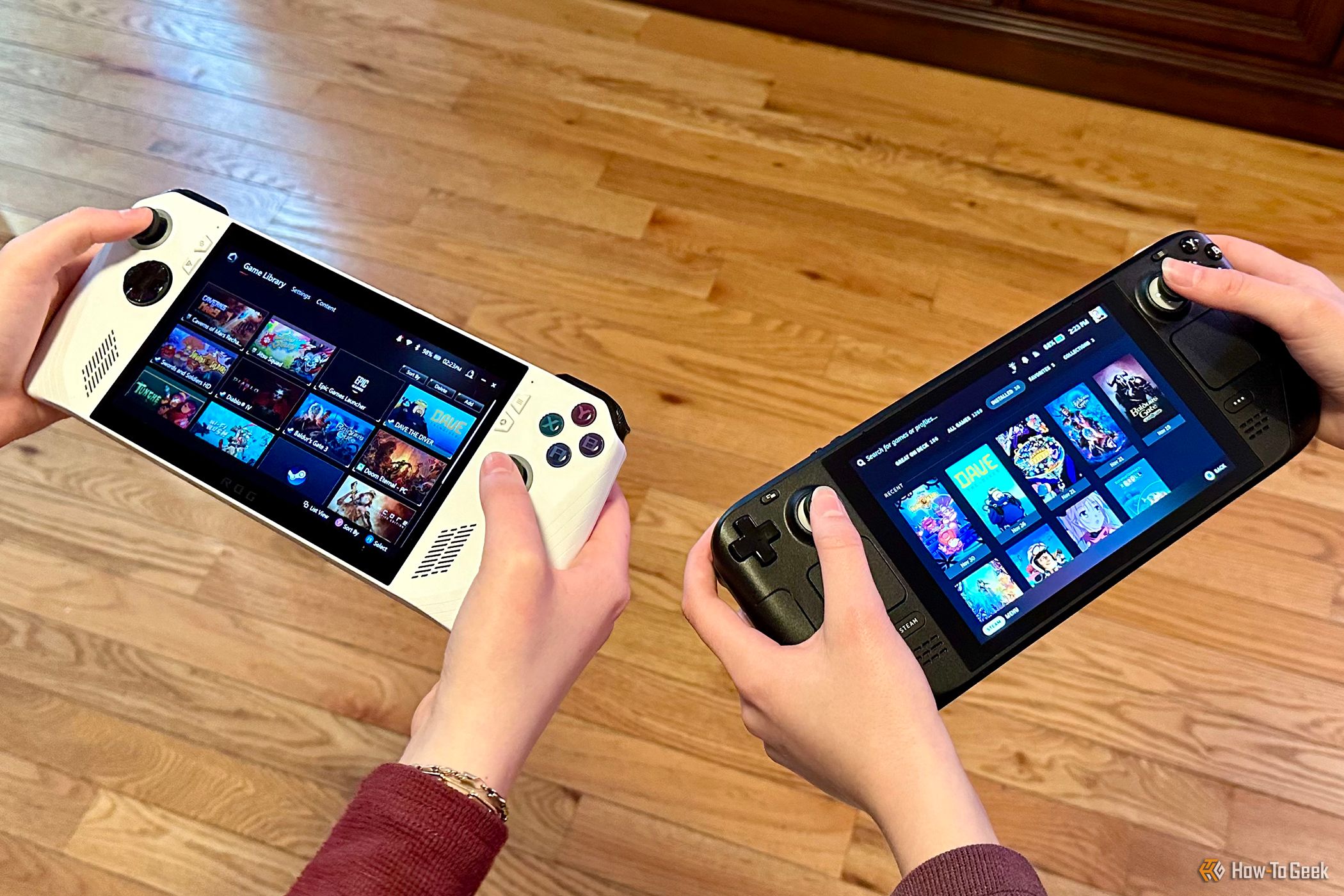Key Takeaways
- ASUS has a history of controversy when it comes to the original ROG Ally, which can make it hard to recommend despite its powerful hardware.
- At a lower price point, with more models to choose from, and the option of a brighter OLED screen, the Steam Deck is generally a better deal even with its less potent hardware.
- The Steam Deck has a more reliable operating system that is catered to the hardware, making it less prone to software issues.
The Steam Deck has some major competition in the form of the ROG Ally X from ASUS, which boasts even more powerful hardware. Despite the obvious performance boost, I went for the Steam Deck instead. Here’s the method to my madness.
ASUS’ Controversial Hardware Issues
When the first version of the ASUS ROG Ally hit the market, it was an impressive piece of technology that set up the company as a main rival to Valve’s own handheld. Unfortunately, it was also marred by some glaring hardware issues.
Players reported that their SD cards were overheating and causing internal damage to the hardware, something which ASUS never properly addressed, instead, denying that the issue existed at all.
To make matters worse, the YouTube channel Gamers Nexus put out a video exposing some of the less-than-friendly practices involving the Return Material Authorization (RMA) of the GPUs inside its system.
In other words, ASUS appeared to be skirting the line when it came to RMAs to make it harder for consumers to send back defective hardware for repair or replacement, something which Valve seems much more willing to do.
The Steam Deck is More Cost-Effective
The Steam Deck might be the less powerful system, but the trade-off is that it is built from cheaper parts, which makes it more affordable in the long run compared to the Ally X. It will still run most current games in the Steam library, but comes at a much lower entry point depending on the model. The Steam Deck starts at $600 for the premium 512GB OLED model versus the $800 base version of the Ally X.
With the Steam Deck, you’ll save money right out of the gate, giving you more to spend on games and accessories like a dock to play it on a monitor or TV. There are also multiple options with different price ranges, with the cheapest being the LCD model with 256GB of storage at only $400.
I Love the Steam Deck’s Trackpads
While the Ally X might be the more powerful system in terms of hardware, it does miss out on a few useful features that the Steam Deck has to offer. The most obvious of these are the trackpads.
These simulate the function of using a mouse and make it more convenient to navigate certain UI elements or aim in-game weapons with a little more precision than a joystick would offer. They’re great for strategy titles or mouse-heavy games like Papers, Please and Return to Monkey Island. They also make navigating the desktop UI with a pointer far more pleasant.
Linux is More Reliable
Another issue that kept coming up during my research was the problems Ally owners have had with Windows 11, which is not built specifically for the platform and is prone to bugs and crashes thanks to mandatory software updates.
The Steam Deck, on the other hand, runs using a modified version of Linux. This may seem a little more archaic than Windows 11, but it offers stability, customization, and it can still be a “real” desktop OS when you need it to be.
While navigating file folders and external software on the Steam Deck has a little more of a learning curve, you can soon get up to speed with the Linux directory structure. SteamOS, which uses Linux as its base, is made specifically for the Steam Deck. ASUS relies on software like Armory Crate to better adapt the Windows UI to its handheld form factor.
Controls Feel More Intuitive
With the trackpads and four extra buttons on the back, the Steam Deck’s controls feel surprisingly intuitive for just how big it is compared to a traditional controller. The triggers and shoulder buttons are easier to reach and the joysticks are positioned parallel to one another as opposed to the Ally X’s diagonal orientation, something which I have always preferred even for console controllers.
Asus ROG Ally Z1 Extreme (left) versus Steam Deck 512GB LCD (right)
Players can also create and share custom control schemes for games on the Steam Deck in case the default ones don’t work well enough, which you can easily switch between with a simple menu. These are seamlessly integrated into SteamOS, making it a simple task to customize and change controls without having to change every individual keybind one at a time.
You can rebind controls on the ROG Ally too, but you’ll need to use ASUS’ software to do it.
OLED is the New Standard
One of the biggest advantages the Steam Deck has over many of its competitors, including the Ally X, is its brightly lit OLED screen. This has quickly become the new standard for handhelds with its 90Hz refresh rate and HDR support. With higher refresh rates, capping out at 90hz as opposed to the original 60hz in the LCD model, the Steam Deck OLED enjoys higher graphical fidelity and performance in certain instances.
The ROG Ally X, on the other hand, is still using the same LCD screens the original Steam Deck model had, which, while perfectly usable, lacks the vibrancy that you might expect from an $800 piece of hardware. ASUS still has the better hardware in most other instances, but with a battery life ranging from only 2-3 hours in the best circumstances, the Steam Deck will make your games stand out much more with less of a hit to the battery.
The only thing I wish that Valve had been able to implement that the Rog Ally X has, is variable refresh rate support. VRR could be a game-changer on a handheld like this, where performance dips due to performance limitations aren’t exactly uncommon.
At the end of the day, the handheld you choose to buy will come down to your personal preferences and needs. Fortunately, you have plenty of options when it comes to handheld gaming even outside of these two. For me, the Steam Deck trumps the Ally X when it comes to quality of life, value for money, and Valve’s stronger reputation when it comes to technical support and accountability.







